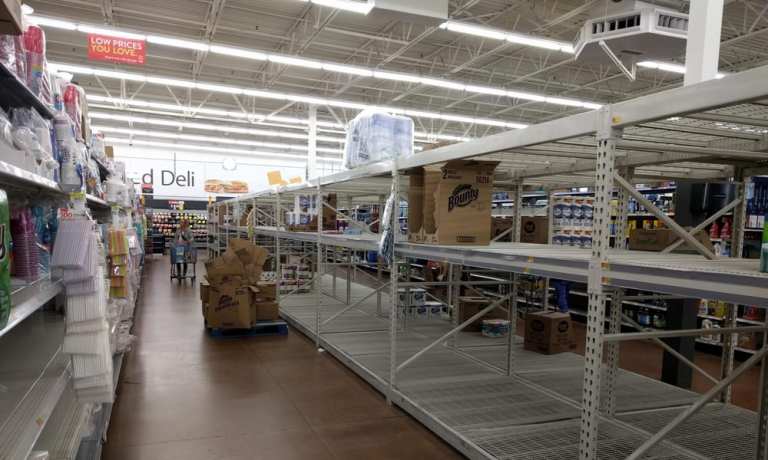
The universal characteristics of the coronavirus are change and speed.
The virus is spreading quickly around the globe, of course, and has abruptly changed life for billions of people.
And in an interview with Karen Webster, Chris Caton, senior vice president and head of global strategy and analytics at Prologis, supply chains are about to change as well.
At a high level, eCommerce is becoming ever more entrenched in how we browse, buy and get the things we need.
As Caton told Webster, there’s been a spike – though certainly not enough to use the term “boom” – in online buying activity related to essential daily needs, across a range of customers, that makes city life possible.
A majority of Prologis’ assets are in what Caton called “last touch and city distribution.” Prologis leases logistics facilities to more than 5,500 customers across two major categories: B2B and retail/online fulfillment.
As the global recession takes shape, he said a number of customer categories will perform worse than other verticals, including autos (which he estimated as being 8 percent to 10 percent of Prologis’ customer base), hospitality, and entertainment and theme parks. Retail will see a bit of a shift online, but only partly offsetting the decline in foot traffic to brick-and-mortar locations.
Shifts in Consumer Behavior
Of particular note has been the shift by seniors (among the hardest-hit demographics in the ongoing pandemic) toward shopping online, and where the grocery segment, traditionally an underpenetrated category for eCommerce, has been seeing increased traction online. Caton said the grocery vertical has several logistics considerations (such as cold storage) that are likely to impact how industrial real estate is developed and deployed.
“As a percentage of all retail sales,” he said, “eCommerce has been at around 11 percent – and some experts see no reason why it can’t double [as a percentage] by the end of the decade.” The coronavirus, he maintained, is leading to those estimates being reassessed, as we could get to that percentage at a faster pace.
That would put pressure on supply chains, as Webster and Caton discussed. After all, Caton noted, for every dollar of sales an eCommerce firm realizes, it needs three times the level of supply chains than might be seen across other forms of commerce. That’s because eCommerce companies relocate items from shelves and stores into logistics facilities and must hold large amounts of inventory on hand to combat stockouts.
In addition, eCommerce-focused supply chains must be flexible enough to accommodate omnichannel experiences such as buy online, pick up in-store (BOPIS) and customer returns done from the doorstep (or even items that are ordered online but returned in-store).
“The supply chains historically were built for efficiency, and going forward, they’re increasingly going to be built for resiliency,” Caton noted. “That translates to higher inventories – and I think it’ll translate to more demand for logistics real estate.”
Looking Ahead
Drilling down a bit into the logistics industry, Caton said that the average contract term lengths stretch over a five-year period.
“An important thing to know about our industry is that while there may be this volatility in the economy, it doesn’t translate to the same level of volatility, and cashflows are our operating performance,” he noted.
Beyond the insulation of long-term contracts, Caton continued, Prologis and other players in industrial logistics are in a unique position to assess the ongoing changes COVID-19 is wreaking across the globe.
He pointed out that Prologis’ presence in 19 countries positions the company as a “contemporary indicator,” with insight into how some countries are grappling with the pandemic’s impact on business and logistics, and even how some countries are beginning to emerge from the sudden shock of it all.
In one example, Caton said that in China, the country’s economy effectively stopped in January and February, although some activity is starting to come back online in recent weeks. “It’s not back to normal, but it is definitely growing again” as eCommerce is critical in getting rapid fulfillment to stores, he noted, and leasing activity for industrial real estate has also started to re-emerge. In February and March, Prologis signed more than a half-dozen new and renewal leases in China, amounting to about 600,000 square feet.
Supply chains will likely get a bit shorter, Caton said, as we’ll see more “near-shoring” as a result of the coronavirus, where production and manufacturing facilities will be moved closer to final markets. In that scenario, for example, Mexico may be a production hub due to its proximity to the U.S.
Those are eventualities. But right now, Caton noted, when it comes to actual supply within logistics, the current volatility – especially in financial markets – is having an immediate, and negative, impact on development activities, chiefly through delaying investment decisions.
As to the questions of when this will all be over and when we’ll be able to emerge from the shadow of COVID-19? Said Caton to Webster: “I’m spending all my days on it.”